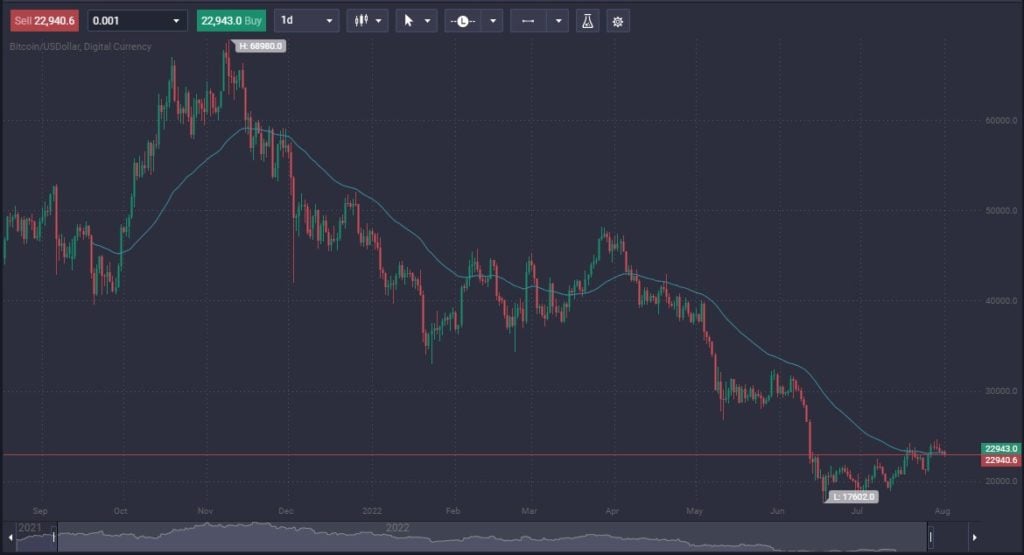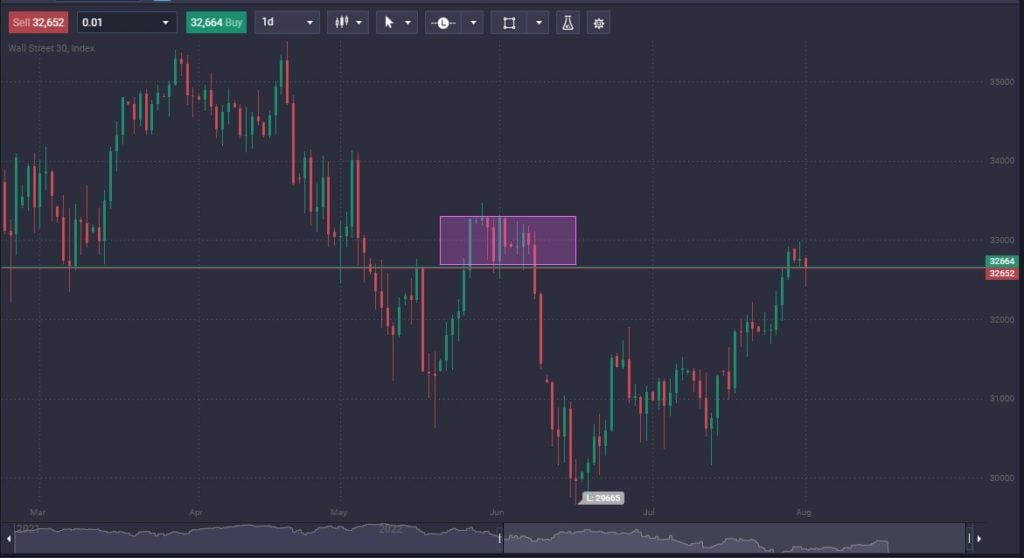Position trading is one of the most popular ways to invest or trade assets. By its very definition, position trading is a longer-term strategy that can last anywhere from several months to several years. This strategy typically employs more fundamental analysis than shorter-term trading, ignoring day-to-day noise. Position trading for beginners is probably one of the easiest ways to get involved in the market. When you have a position in trading that doesn’t require much attention, you are maximizing your time, which is the major appeal of this type of trading.
What is Position Trading?
Position trading is one of the longest outlooks for investing. The potential profit is greater than the average trade but is riskier due to the holding period. However, the reward can be massive as the trader looks to hold onto a position for the entire economic cycle.
Warren Buffett is a famous position trader known to people around the world. He typically will buy an asset and hang onto it for quite a long time. Some positions have been in his portfolio for decades. He does not worry about the day-to-day noise and recognizes that the shorter time frame can be more noise than anything else.
Position Trading Example, Zoom and the Pandemic
An example of a position trade occurred during the coronavirus pandemic. Those who started to see that the way people worked was about to change had plenty of opportunities in the market. One such example would be the company Zoom, which specializes in videoconferencing.
As people began to work from home, the use of this software exploded. In fact, as the idea that most offices around the world were going to go to remote work spread, the price of Zoom stock rose from roughly $70 to almost $600 in nine months. Since then, the chart clearly shows that we have made a “round-trip,” as the stock has plummeted to roughly where it started in early 2020.
That said, a position trader using an unleveraged position would have achieved a 600% gain. It may have been much more through options or other levered products.
Position Trading vs. Swing Trading, What’s the Difference?
Position trading is longer-term based and is often confused with swing trading. They do follow similar concepts, but the difference is mainly time frames. Position traders hold their position for a more extended time than swing traders, which is usually over months or years, while the swing trader will often keep their trade from a few days to several weeks.
Position Trading vs. Day Trading, What’s the Difference?
Position trading is by its very nature the exact opposite of day trading, which takes advantage of short-term fluctuations in the price of an asset. Somebody who is day trading is trying to buy and sell assets to close their positions before the end of the trading day, rarely holding onto them overnight.
Day trading is a very difficult way to speculate on the markets because there is so much in the way of noise coming out of your average financial market. Typically, somebody who is day trading has to pay much more attention to the markets, as a move over a few minutes may cause financial damage.
What is a Position Trader?
A position trader is somebody who hangs onto an asset for more significant moves. They will often enter a market with an eye on the bigger picture, hanging onto a trade for weeks, months, or possibly years. The idea is that you are trying to catch significant shifts in the economic outlook for the stock, index, commodity, cryptocurrency, or fiat currency.
What Are the Advantages of Position Trading?
There are numerous advantages to position trading, which is why most professional money managers employ this strategy. Some of the most obvious ones include:
- Long-term strategy/significant gains: Position trading is a longer-term strategy that can lead to more significant gains than intraday trading.
- Less stress: There is much less stress in position trading because your positions will not need to be monitored frequently, freeing up time for other concerns.
- More time to look for opportunities:Position trading allows the trader to spend more time looking for other opportunities. This includes searching for stocks, currencies, or other assets to devote trading capital to. Instead of constantly monitoring or adjusting positions, they can look for more opportunities for longer-term gains.
What Are the Disadvantages of Position Trading?
While position trading has several advantages, nothing is perfect. There are some things to keep in mind about potential disadvantages:
- More capital-intensive: It can take more capital to keep a position open for an extended time, as trades that last for several months will require you to lock up capital in that position. Furthermore, you may miss other opportunities if you do not have a sufficient account.
- Swap fees: Swap fees can add up over time, so a position trader needs to know whether or not that is eating up the potential opportunity.
- Lower risk, lower reward: Depending on your position sizing, there tends to be a lower risk with longer-term trades. This is because it takes much longer to get stopped out, and you should practice money management. Properly sizing your positions may take a while to get massive gains. Otherwise, if you go “all in” into a position, you risk wiping out your account while tying up vast amounts of capital.
Approaches of Position Traders
While no two traders are the same, most position traders approach the markets utilizing fundamental and technical analysis. This is because they are hoping to capture big moves but, at the same time, try to enter the market with as much precision as possible.
Technical analysis is used to identify trends in asset prices that can allow a trader to earn profits. It also can be used as a timing mechanism, telling the trader to get into a position or perhaps out of it.
Technical analysis is used to determine whether or not an asset has entered a strong trend or if it is set up to do so. As a general rule, traders try to find fundamental strength first and then have technical analysis to confirm whether the market agrees.
Fundamental analysis is crucial for position traders, as they hope to hold an asset for longer. Fundamental analysis considers various factors, such as supply and demand, economic strength or weakness, earnings and dividends, and cross-border transactions.
An example of using fundamental analysis might be related to the Australian dollar and commodity markets. Suppose the demand for copper was to fall drastically from the Chinese mainland. In that case, this could put downward pressure on the Australian dollar. Australia is the largest exporter of copper to China, which in turn uses that copper to export goods to other countries and construction domestically.
Position Trading Strategies
Position trading strategies are crucial if you try to take advantage of more significant moves. It’s worth noting that the average position trader does not worry about the day-to-day noise, so a certain amount of patience will be needed to employ the strategies. However, they tend to produce much larger profits over the longer term.
The 50-day Moving Average Trading
The 50-day Moving Average trading system is simple. You follow the 50-day moving average on the chart. If it’s going higher, you are long or buying. If it’s going lower, you are short or selling when the asset breaks to the opposite side; you either exit or go in the opposite direction.
One concern about this strategy is that it can generate many false signals in a somewhat sideways market. Be aware that you are essentially risking a lot of small losses for a much larger one.

50-Day EMA on the PrimeXBT platform
The Support and Resistance Trading Strategy
The Support and Resistance Trading Strategy is either selling at resistance or buying at support. These areas were defined previously as both supply and demand, also known as “market memory”, and therefore the idea is that the market will react the same way it did the last time it got to the price. If a previous support level is broken, the market could continue trending lower. Conversely, if resistance is broken, markets could continue higher.
As an example, the attached chart shows the USD/CAD currency pair. Notice how reliable the area of support was near the 1.2422 level. Traders who use this strategy would have continued to buy this pair every time it dipped to that level.
Breakout Trading
Trading breakouts are a common way for position traders to act in the markets. By letting the market tell you where it is consolidating first, you begin to recognize that a breakout of that area suggests something has changed. For example, look at the Dow Jones industrial average chart below. Before breaking down drastically, the market had been trading in a relatively tight range for a couple of weeks.
Once the market broke below the bottom of the pink rectangle, it was evident that the sellers had taken control. You can see that the Dow Jones Industrial Average lost nearly 2500 points just after this breakdown.

Dow 30 PrimeXBT platform
The Pullback and Retracement Strategy
The Pullback and Retracement Strategy is probably one of the most commonly used by longer-term traders, be it position traders or investors. It involves waiting for a bit of value and then jumping in. For example, suppose a significant uptrend has been going on for a while. In that case, they will wait until it pulls back 50%, a Fibonacci retracement level, or even a simple moving average to get involved. This is because the market is offering something “on-sale” from a higher level as it had been so bullish.
This also works on retracement moves in a downtrend because no market goes in one direction. For example, markets may fall quite drastically, but occasionally there will be short-sellers taking profit, value hunters trying to get involved, or other factors that cause the market to bounce. That bounce could allow you to short that market from a higher level.
What Instruments Do Position Traders Typically Trade?
Position trading can be done with almost any instrument that has public markets. The most liquid markets are preferable because the occasional news may cause extreme volatility. Any market that is not widely traded can make a trade move against you quite rapidly. However, if it is a market that is widely traded, there will be more opportunities for the market to stabilize in the face of news.
Shares CFDs
Shares can be traded through the contract for difference (CFD) markets, and many traders enjoy holding on to longer-term trades in this market. The downside, of course, is that the risk is concentrated, as company-specific news can make for significant volatility.
However, if you choose to invest in a company longer-term, you may find this is an excellent alternative to owning shares. This is because you can easily hold fractional lot sizes and go both long and short.
Commodity CFDs
Commodity CFD markets are a great way to take advantage of markets such as crude oil, gold, and others. PrimeXBT offers commodities through the contractor difference market, allowing you to take advantage of both movements to the upside and the downside and eliminate the need to buy an entire futures contract. In other words, you can scale your position size appropriately for your account size and risk tolerance.
Indices CFDs
PrimeXBT also offers the CFD market for indices. This allows you to place granular bets on various stock markets worldwide. If you believe the Australian stock market will fall, you can short the AUS200 to take advantage of this opportunity. On the other hand, if you think the French market is about to take off, you can go long FRANCE through the platform. This allows the trader to speculate on a national market without jumping in and picking a particular company.
Forex CFDs
Currency markets are an exciting way to play national economies around the world. Using the CFD market, PrimeXBT allows you to speculate on currencies such as the Euro, Dollar, Yen, and many others. Position trading is quite common in the currency markets, as they tend to be a little less volatile, given that they make up the most liquid market in the world. sing leverage can also be very profitable in the Forex market.
Cryptocurrency CFDs
Cryptocurrency markets are one of retail traders’ most exciting ways to speculate. By using the CFD market at PrimeXBT, you can forgo the hassle of dealing with custody and, of course, can short a cryptocurrency in a much more straightforward way than traditional brokerages. It’s simple to click a couple of buttons and get involved in markets you are interested in.
Conclusion
Position trading is a great way to make longer-term profits, bringing down quite a bit of the potential stress involved in trading shorter-term moves. Furthermore, the day-to-day noise does not become much of an issue, at least under normal circumstances.
Position trading will allow you to do more analysis, perhaps finding other trades. You do not have to sit in front of the computer all day, so it will enable you to go on with your life. After all, we are here to profit before it’s all said and done, freeing up our lives. Unfortunately, far too many people pay attention to short-term charts, staring at a screen all day and forgoing their freedom. Position trading is a great way to get away from that trap.
The average person has a 9-to-5 job that they also have to worry about, and position trading allows those people to be involved. You do your analysis, press a few buttons, and then walk away. This allows traders to participate in more significant market moves, which is what most professional money managers do, to begin with.
That being said, position trading is not for everyone. You need to have the patience necessary to hang onto a trade for several weeks, if not a few years at a time.
What is an example of position trading?
A position trade might consist of something like buying a stock in January based upon analysis. The enterprise could be something like $12.15, and your research suggests it could go to $21.03 for it is all said and done. Hanging onto the trade for nine months, your trade finally hits your price target, at which time you choose to take profits. That is an example of a longer-term position trade.
What is a position trade?
A position trade is a longer-term trend that allows you to hang onto an asset for a longer timeframe, such as several weeks, months, or possibly even years. The idea is that you catch big swings in price over more extended periods.
Can you make money from position trading?
Yes, most hedge funds and money managers do position trading due to the size of their accounts. Because of this, position trading is how most money is made in the markets, including your retirement account.
How much do position traders make?
Like any other type of trading, results may vary. However, most professionals approach the market this way. Day trading is a challenging skill to learn, so the road to profitability is much shorter via position trading.
What is the best position trading strategy?
It depends on the asset you are trading, the time frame you are thinking, and your money management profile. There is no “one-size-fits-all” strategy that you should use, but you can use some of the ones we have provided in this guide as a starting point.
Which time frame is best for position trading?
It’s not about the timeframe but the length of time you hold on to a position. Most traders will look at weekly or daily charts and then try to fine tune entries on shorter time frames.
What are the best indicators for positional trading?
Moving averages are very popular. However, you should note that many position traders do not use many technical indicators as they rely on quite a bit of fundamental analysis. Support and resistance is probably the most important thing to pay attention to on a chart, but you should use whatever works for you.
The content provided here is for informational purposes only. It is not intended as personal investment advice and does not constitute a solicitation or invitation to engage in any financial transactions, investments, or related activities. Past performance is not a reliable indicator of future results.
The financial products offered by the Company are complex and come with a high risk of losing money rapidly due to leverage. These products may not be suitable for all investors. Before engaging, you should consider whether you understand how these leveraged products work and whether you can afford the high risk of losing your money.
The Company does not accept clients from the Restricted Jurisdictions as indicated in our website/ T&C. Some services or products may not be available in your jurisdiction.
The applicable legal entity and its respective products and services depend on the client’s country of residence and the entity with which the client has established a contractual relationship during registration.




